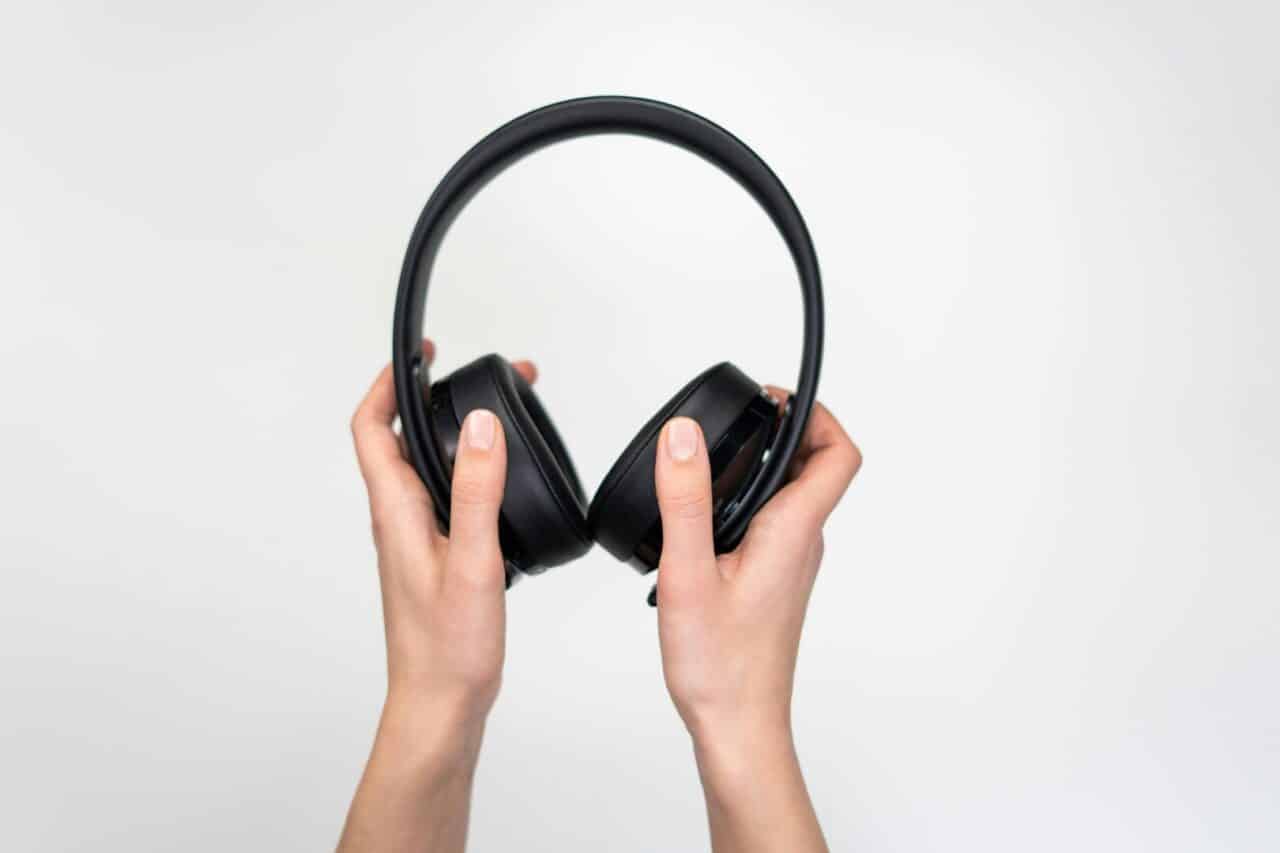In our digital world, headphones are everywhere. Whether listening to music, audiobooks and podcasts, taking a call hands-free or connecting to a Zoom meeting at work, we increasingly need headphones to connect to the world.

At the same time, almost 30 million adults could benefit from hearing aids. If you’re a hearing aid user or if you’re considering wearing hearing aids, you may be wondering if you can wear headphones with your hearing aids. Hearing aids are a critical component of how you connect to the world, and that includes streaming and audio. After all, your headphones can be an essential part of the ritual of enjoying your favorite music, or you may wish to use noise-cancelling headphones in noisy environments. So, let’s discuss ways to wear headphones and your hearing aids comfortably.
Best Headphones Fit for Your Hearing Aid Type
It’s essential to match your headphone style to your style of hearing aids. You don’t want your headphones to come in contact with your hearing aid if you can help it; you want them to sit comfortably next to each other.
In-ear headphones, like earbuds or AirPods, present the largest challenges when worn with hearing aids. You may be able to use them with completely in-canal (CIC) hearing aids, fitting the earbud into the ear behind them.
On-ear headphones go over the head and rest on top of the ear. They can be used with most smaller styles of hearing aids, such as in-the-ear (ITE) hearing aids and CICs.
Over-ear headphones are the most popular option for hearing aid users. They cover the whole ear, so they can work with ITE and CIC hearing aids, as well as the larger and more popular behind-the-ear (BTE) and receiver-in-canal (RIC) hearing aids. They also offer better noise suppression than the other types of headphones.
Potential Disadvantages to Using Headphones with Hearing Aids
- Feedback. Headphones, especially in-ear headphones and ear buds, could move your hearing aid, creating an opening for sound to leak out of the ear canal and causing feedback. Generally speaking, the more space between your headphones and your hearing aid, the lower the chance of feedback.
- Misalign your hearing aids. Continuous pressure from the headphones could move your hearing aids, leading to discomfort (even after the headphones are taken off) or damage to the tubing and wiring.
- Decreased sound quality. The presence of your headphones may cause the sensor in your hearing aids to change the settings, thinking you’re in a different environment. You may get a spontaneous change in volume or background noise suppression.
If you’ve been wearing headphones for an extended period of time and notice discomfort around your hearing aids or a change in audio quality, contact your hearing healthcare provider to troubleshoot. If your audiologist knows you’re an audiophile, they’ll work with you to make sure your hearing aids work well with headphones. Call The House Institute for more information or to make an appointment.